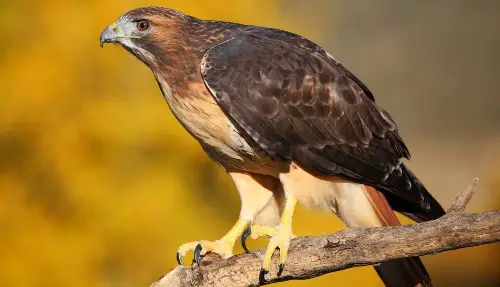If you want to take your birding experience to the next level, looking for hawks is the way to go! There are already many birding spots in Indiana -- from state parks to national parks!
The only problem is distinguishing different hawks!
To familiarize you with the nine species of hawks in Indiana, we'll be discussing their identification, habitats, and other cool facts. Let's go!
All About The Nine Hawks Of Indiana
1. Broad-Winged Hawk (Buteo platypterus)
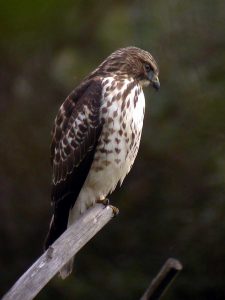
Appearance
As you may have guessed, the Broad-Winged Hawk is named for its broad wings compared to its size. Its upperparts are a mottled, dark brown color, while its underparts are white with a brown bar pattern. Lastly, its tail and underwings are white with black bands, which are visible during flight.
Habitat
Though they're not a common species, Broad-Winged Hawks are present throughout Indiana during summer. They live in deciduous or mixed woodlands, usually perched near a body of water. They typically avoid urban areas and man-altered landscapes. When they migrate to South America, they form large flocks around coastlines, mountain ridges, and open countries.
Diet
Broad-Winged Hawks have a varied diet, including small mammals, birds, reptiles, amphibians, and sometimes fish and large insects.
Fun Fact: There's a subspecies of the Broad-Winged Hawk in Puerto Rico, which is endangered with a population of around 100.
2. Cooper's Hawk (Accipiter cooperii)
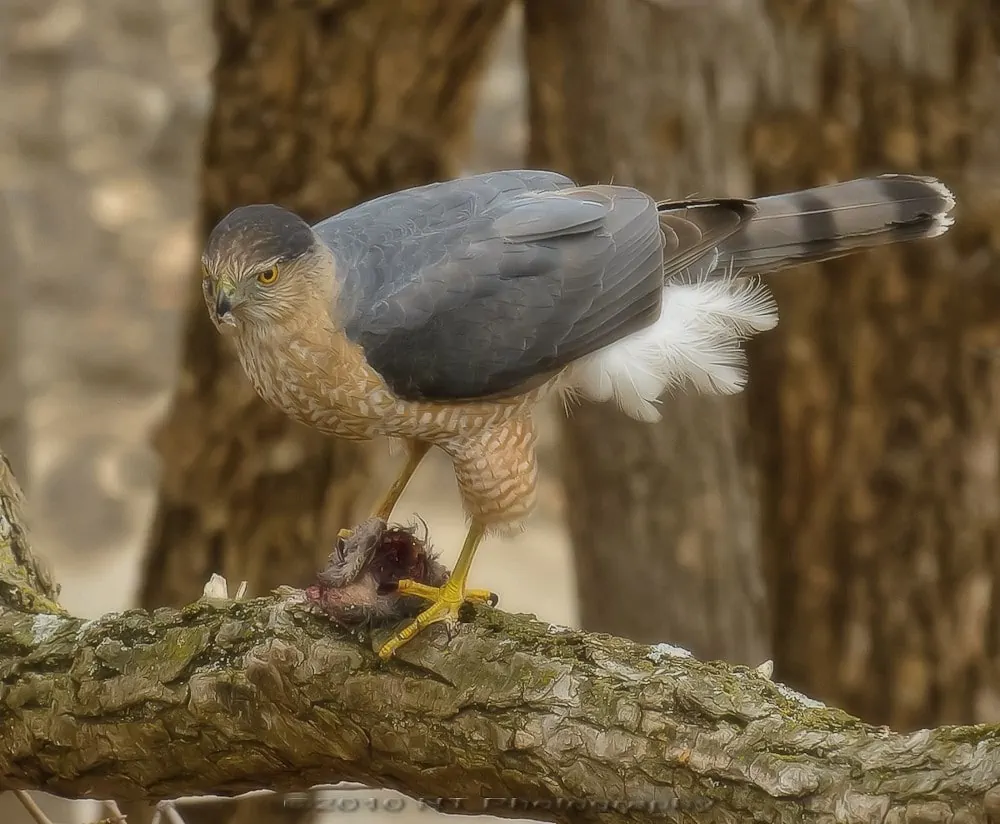
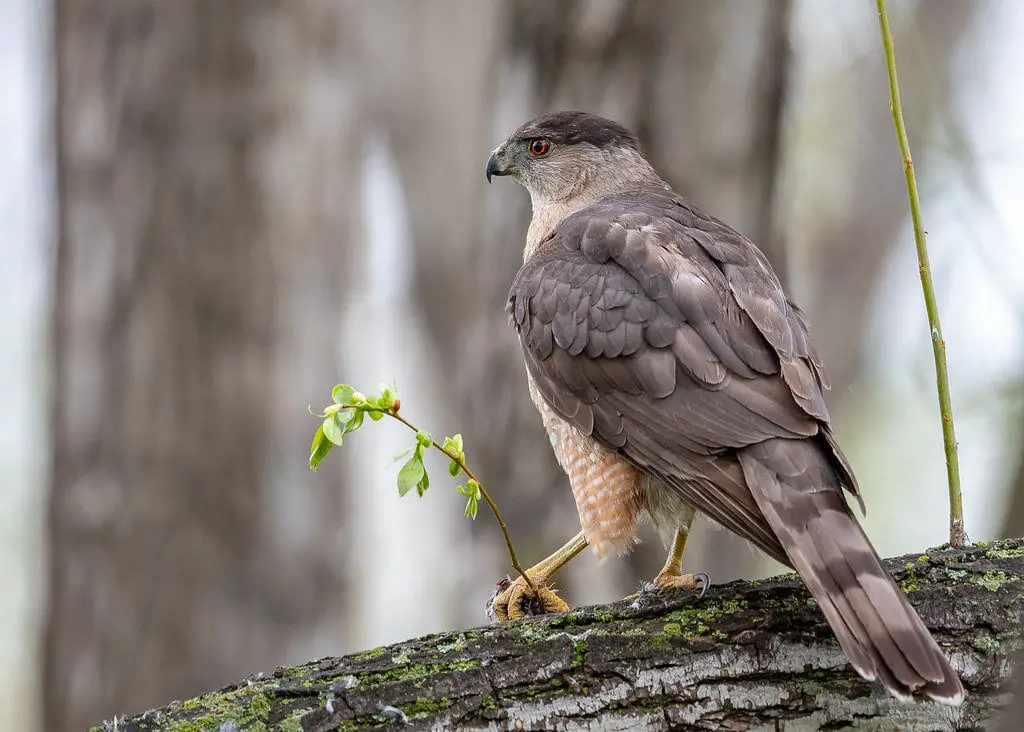
Appearance
The Cooper's Hawk is an agile bird with dark blue-gray upperparts, contrasted by the white underparts with many rufous bands. Meanwhile, its tail and underwings are gray with thick black bands.
Females share the same colors as males, except they're duller.
Habitat
Cooper's Hawks are seen all year throughout Indiana, commonly found in mature coniferous, deciduous, or mixed forests.
However, they can also be found in suburban areas with tall trees for nesting.
Diet
Cooper's Hawks mostly eat birds, such as flickers, jays, robins, and small mammals, such as chipmunks, bats, and squirrels. They do eat insects and reptiles sometimes.
Fun Fact: Cooper's Hawks often dash through vegetation to catch prey. This can be harmful, as over 300 skeletons of this species were observed to have healed fractures.
3. Northern Goshawk (Accipiter gentilis)
Appearance
The Northern Goshawk has slate gray, almost black upperparts, while its finely-barred underparts are pale gray.
Other defining characteristics include its gray eyebrows and strongly-banded tail.
Habitat
Northern Goshawks are one of the most challenging hawks to find in Indiana. They are extremely scarce and only found during winter throughout Indiana. Additionally, you would have to explore since they're secretive and prefer staying in dense forests.
Diet
Northern Goshawks are opportunistic hunters as they can eat a wide variety of food. Their meals primarily consist of medium-sized birds, such as crows, and mammals, such as squirrels, rabbits, and hares. They also eat smaller birds, other mammals, snakes, and insects.
Fun Fact: The name "Goshawk" comes from the Old English "goose hawk," referencing this raptor's habit of hunting birds.
4. Northern Harrier (Circus hudsonius)
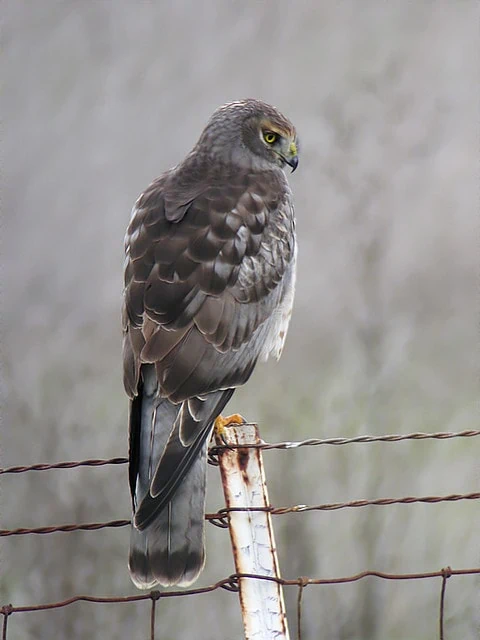
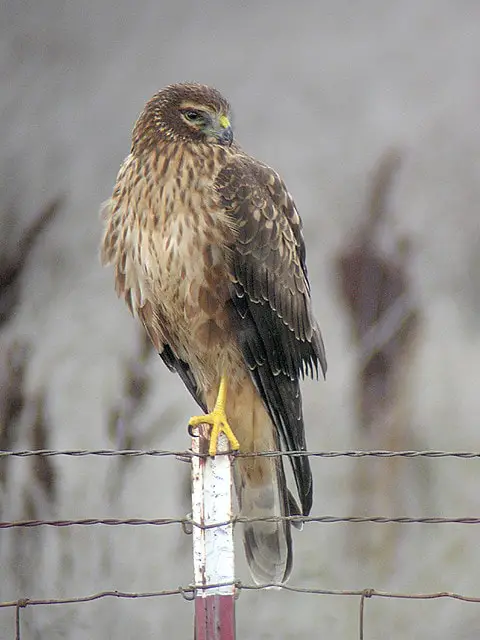
Appearance
The Northern Harrier is a large bird with gray upperparts and black tips on the wings. Meanwhile, its underparts and underwings are white with a spotted breast. Females share the same pattern, but they're more brownish than gray.
Habitat
Northern Harriers are permanent residents throughout Indiana. This species of hawk usually occupies wide-open habitats, such as meadows, marshes, and fields.
Diet
Northern Harriers usually eat birds, such as flickers, songbirds, ducks, and mammals, primarily small rodents. However, they also eat reptiles, amphibians, and large insects.
Fun Fact: The Northern Harrier is the only harrier variety indigenous to North America.
5. Red-Shouldered Hawk (Buteo lineatus)
Appearance
As the name suggests, the Red-Shouldered Hawk has red shoulders. This is especially conspicuous since they're contrasted by brown upperparts with white checkered wings. Meanwhile, its underparts are white with many rust-colored bars. The wings and tail below share the same patterns above.
Habitat
Red-Shouldered Hawks are found year-round in Indiana, usually seen in mixed woodlands near water, such as rivers or swamps. However, they can also be in suburban areas mixed into forests. When they migrate, you can see them around ridges and coasts in the sky.
Diet
The diet of Red-Shouldered Hawks varies depending on the region and location. This includes many kinds of prey, such as small mammals, reptiles, amphibians, birds, large insects, and even some fish.
Fun Fact: The Barred Owl and Red-Shouldered Hawk share the same range in the eastern USA. The owl is active at night, while the hawk at day.
6. Red-Tailed Hawk (Buteo jamaicensis)
Appearance
The Red-Tailed Hawk has a red-brown tail easily identified when perched. The rest of its upperparts are brown with some white markings. On the other hand, its underparts and underwings are white with many brown markings, while the tail below is a warm brown.
Habitat
Red-Tailed Hawks are widespread, permanent residents of Mexico and the USA. They're also the most common hawks in Indiana, usually present around open areas with many tall, scattered perches. On a long road trip, you may see one perched atop a telephone pole, waiting for prey.
Diet
Red-Tailed Hawks are another species whose diet varies depending on the location and season. They consume a wide range of species but are mainly composed of mammals, including rats, voles, and rabbits. They also eat many birds and reptiles.
Fun Fact: The raspy cries of a Red-Tailed Hawk are often used to represent any hawks in movies, including larger birds like eagles.
7. Rough-Legged Hawk (Buteo lagopus)
Appearance
The Rough-Legged Hawk is the largest hawk species in Indiana. Its head is a brown-streaked white, while its upperparts are brown overall. Its underparts are white with many brown spots, while its wings and tail below are white with dark edges. You can also identify it through its broad, dark breast band and fully feathered legs.
Habitat
Rough-Legged Hawks are arctic birds, but they migrate south to the northern 2/3 of the USA during winter. In the USA, they are primarily found in habitats where rodents are abundant, such as plains, prairies, agricultural land, and even airports.
Diet
As mentioned earlier, Rough-Legged Hawks mostly eat rodents, especially lemmings and voles. However, they also eat other birds, mammals, frogs, and insects.
Fun Fact: The Rough-Legged Hawk is one of the only three American raptors with feathers from the legs to the toes.
8. Sharp-Shinned Hawk (Accipiter striatus)
Appearance
The Sharp-Shinned Hawk looks similar to a Cooper's Hawk, sharing the same dark blue-gray upperparts and rufous-barred white underparts. You can differentiate them through size because the Sharp-Shinned Hawk is the smallest in Indiana. Likewise, look for other defining characteristics like short, rounded wings and a long tail.
Habitat
Sharp-Shinned Hawks can only be found throughout Indiana during winter. They're usually only in deep forest areas, which can be deciduous, coniferous, or mixed. However, they also lurk around bird feeders. You can find these small hawks in open habitats during migration, such as coastlines and mountain ridges.
Diet
Sharp-Shinned Hawks mainly feed on other birds, typically small ones around the size of a sparrow or robin. Their diet also includes rodents, bats, small reptiles, frogs, and large insects.
Fun Fact: The Sharp-Shinned Hawk has skinny, exposed lower legs, hence the name.
9. Swainson's Hawk (Buteo swainsoni)
Appearance
The Swainson's Hawk is a large hawk with dark brown upperparts. It has a white throat while its upper breast is light brown. The rest of its underparts are white with brown markings on the breasts and sides. Meanwhile, its underwings are brown, and the tail beneath is white with black bands.
Habitat
Swainson's Hawks spend summer in the western half of the USA. Still, there have been reported sightings in places outside their range, such as Indiana. However, the data is minimal, so you're unlikely to see one. They usually inhabit open areas with few trees, such as plains and grasslands, and may also perch on fence posts or utility poles.
Diet
These hawks feed primarily on reptiles, like snakes and lizards, and small mammals, like ground squirrels, gophers, and mice. In certain seasons, they may feed on Indiana's insect population, especially grasshoppers and caterpillars.
Fun Fact: Swainson's Hawks are social birds, forming flocks in tens of thousands during migration. This is always a spectacular sight for birders!
Did You Know This? Aside from hawks, falcons, and eagles, owls are also predators and are considered as nocturnal birds! Read more about them by proceeding to "8 Owls In Pennsylvania".
Watch This!
Frequently Asked Questions
What kind of hawk lives in Indiana?
To summarize, here are the nine species of hawks in Indiana in alphabetical order:
- Broad-Winged Hawk
- Cooper's Hawk
- Northern Goshawk
- Northern Harrier
- Red-Shouldered Hawk
- Red-Tailed Hawk
- Rough-Legged Hawk
- Sharp-Shinned Hawk
- Swainson's Hawk
Is it possible to attract a hawk to your backyard?
Hawks won't be attracted to backyard bird feeders themselves. Instead, they will hunt the animals that visit the feeders, such as small birds and squirrels. The Sharp-Shinned Hawk is especially notorious for this.
However, it's not the best idea to spend time attracting hawks. They're still threats to your safety and the life of your domestic pets. These raptors will also drive away any bird that visits your backyard. Our best advice is to take down your feeders for a while or call your local wildlife authorities.
Can a hawk pick up a 7-Pound cat?
Hawks can't pick up larger species heavier than them. As they usually weigh between 1-3 lbs, they can carry prey in that range. However, some larger hawks can carry up to 5 lbs. Nevertheless, they can't pick up a 7 lb cat. Most adult cats weigh over 10 lbs anyway.
However, don't be too complacent about your cat's safety. Hawks can still attack them once threatened or when there's no food around.
Conclusion
There's always something so fascinating about seeing a raptor in action. The way they swoop down to hunt prey is truly a sight to behold!
Though you may have to explore a bit to see the hawks in Indiana, it adds to the experience. We always recommend practicing safety and wearing the proper gear in the wilderness, as hawks can be pretty territorial.
Which is your favorite species of hawk in Indiana? We'd love to know about it!

